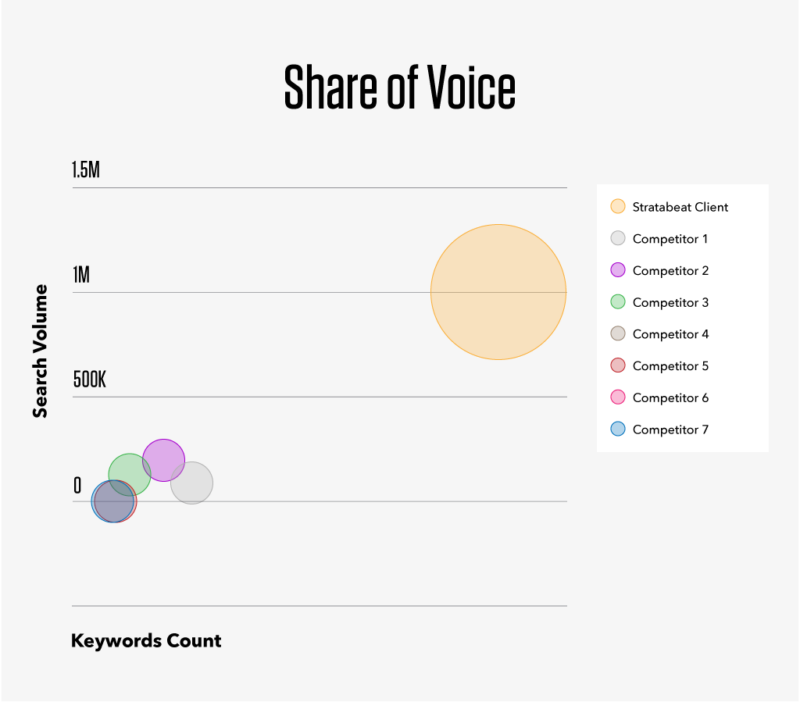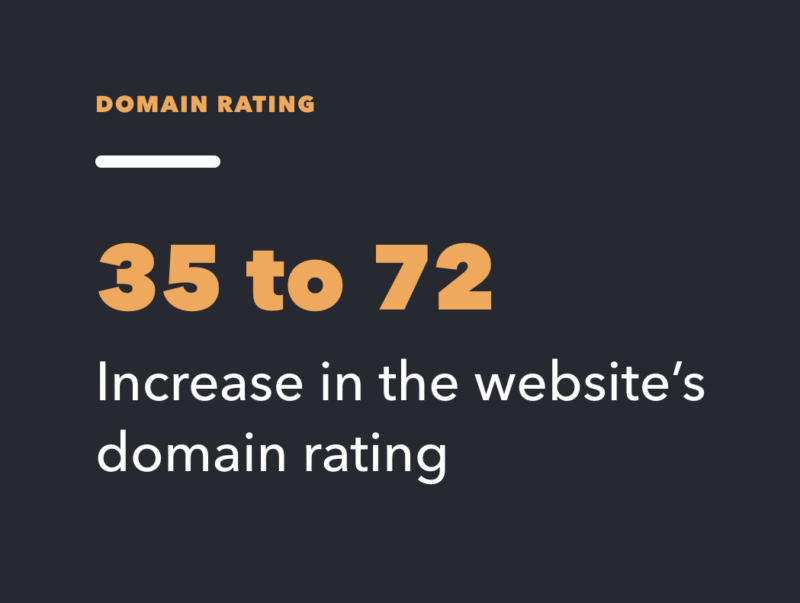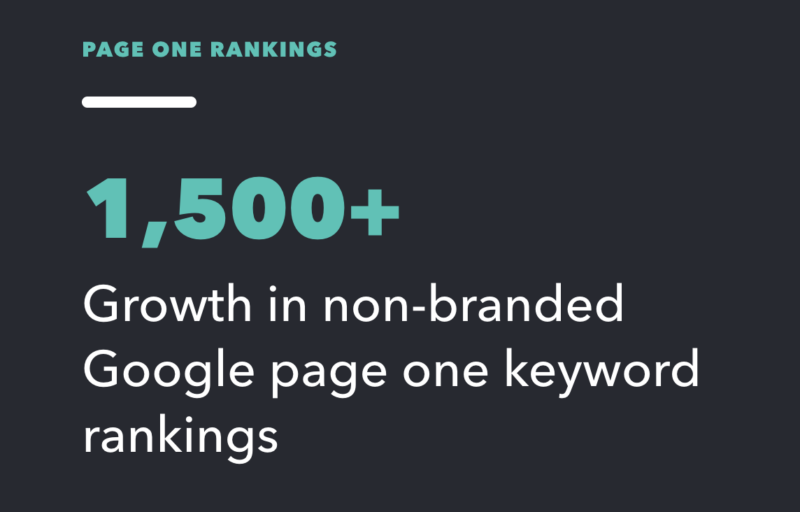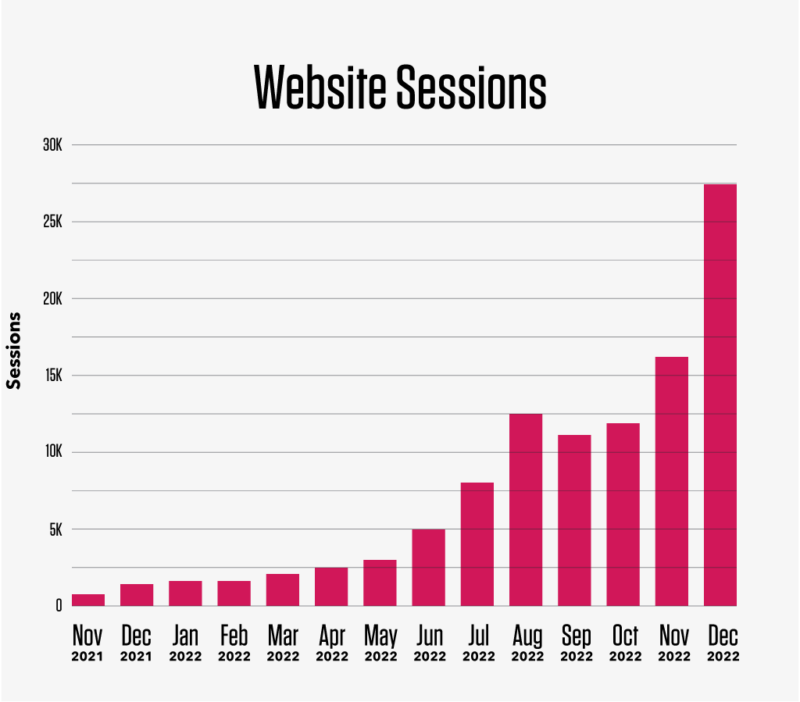16 Important SEO Metrics to Track and Monitor

The beauty of SEO is how measurable it is. Just about everything can be tracked, compared, measured, and optimized. It’s all in the data.
However, this also presents a challenge. There are dozens of SEO metrics that can be measured and tracked. But which ones are the most important? And which should your business focus on?
In this post, we’ll walk through:
- Why SEO metrics matter
- Which metrics you should be tracking
- The best tools for tracking SEO metrics
Why SEO Metrics Matter
SEO metrics matter because they help you understand if your business is set up for organic growth. In other words, is your business driving visibility, traffic, and leads organically, without paid media or otherwise paying for clicks.
SEO metrics reveal if your website is performing in terms of organic search engine rankings. Knowing these metrics helps you to make informed decisions about the strategies and tactics that will be most effective for your website.
By tracking these metrics, you’ll be able to see which tactics are working and which need to be improved upon or changed completely.
If you don’t track SEO metrics, you cannot measure the performance of your SEO campaigns. You can’t optimize your campaigns and you can end up wasting valuable time and resources.
By measuring SEO metrics, you ensure that your site stands the best chance of ranking high in the SERPs.
Important SEO Metrics to Track
Let’s look at SEO metrics you should be tracking as part of your ongoing SEO efforts. It’s important to remember that not all metrics are created equal. Some metrics are more directly tied to search results than others. It’s essential to track and measure the metrics that move the needle the most in relation to your bottom line.
Organic Share of Voice (SoV)
Organic Share of Voice (SoV) is an important SEO metric that measures the intersection of your website’s rankings in organic search engine results pages (SERPs) along with the search volume of such ranking keywords. It compares your website to other domains competing for similar keywords. The more SoV you have, the higher your website ranks for keywords with a greater number of monthly searches.
It’s important to note that SoV represents your site’s visibility for non-branded keywords. In other words, when users are searching for a generic term and not your specific company, brands, or products.
Measure SoV to understand your SEO performance holistically. It’s one thing to rank high in Google for certain keywords, but if those keywords don’t have sufficient search volume, you may be limiting the ROI you see from your SEO efforts.
(Check out our SEO ROI Calculator)
Backlinks
Backlinks are incredibly important for achieving stronger SEO results. Every high-quality backlink your site receives from another site is an indication that the individuals running the site find your content valuable and worth linking to.
Backlinks are one of the main ranking factors used by Google.
So, tracking the number of backlinks your website has is essential to understanding how well your website is performing in terms of SEO. You can also monitor where these backlinks are coming from, which can give you insights into who’s talking about your brand and content.
Keep in mind that “nofollow” backlinks are far less valuable than links without this designation. It’s not that “nofollow” links have zero value. But it’s debatable how much weight they carry.
Some organizations conduct outreach to a broad range of websites seeking backlinks. Stratabeat finds that developing passive backlink strategies instead is far more effective. Increasing the value of your content to the point where it organically attracts passive backlinks is a highly effective way to improve your SEO performance overall. And it’s more efficient, as well.
Referring Domains
Every backlink your website receives comes from a “referring domain”. Generally speaking, it’s better to get backlinks from multiple referring domains rather than multiple backlinks from a single referring domain.
As mentioned, Google treats backlinks as votes of confidence from other websites. When a website links back to yours, it establishes their confidence in your content. Additional backlinks, while valuable, don’t add as much value as backlinks from new, high-quality referring domains.
Analyzing the referring domains of your backlinks will give you a better understanding of the organizations linking to your website.
Domain Authority or Domain Rating
Domain authority (DA), often called domain rating (DR), is not technically a Google ranking factor. Rather, it is a measurement used by prominent SEO tools such as Semrush and Ahrefs to calculate the overall SEO strength of a website. However, it should be noted that DA/DR is calculated based on elements that are Google ranking factors, such as backlinks, current rankings, etc.
Essentially, is a score between 1 and 100 that indicates the strength of a domain for achieving high organic rankings in the SERPs. A higher domain rating indicates that the website has more SEO power than websites with lower rankings. All things equal, the higher your domain rating the easier it is for you to rank for keywords.
For example, IBM.com has a DR of 92 according to Ahrefs and a DA of 86 according to Semrush, indicating that it is an SEO powerhouse. The website ranks for millions of keywords, including highly competitive terms.
The metric can be used to benchmark your website against competitors and see where you stand in relation to them. You can also use it to see how your website’s SEO grade overall is improving or declining over time.
Number of Pages Indexed
The number of pages indexed metric tells you how many pages on your website have been indexed by Google. If a page is not indexed, it won’t appear in search results. By tracking this metric, you can see how many of your pages are being indexed and up for consideration in the SERPs. The more indexed pages you have, the more opportunities you have to rank in Google for unique queries.
If you find that certain pages on your website are not indexed yet should be, you can take steps to get them indexed. For example, you can submit a sitemap to Google Search Console or manually submit pages for indexing through GSC.
It’s important to note that having more indexed pages does not automatically equate to more organic traffic. Pages still must be optimized for search. However, if a page is not indexed it cannot bring any organic traffic to your site.
Crawl Errors
A crawl error is an issue on a website that prevents Google’s web crawler (also known as a spider or bot) from accessing and indexing pages. To track crawl errors, you can use Google Search Console or tools like Semrush, Ahrefs, and ScreamingFrog.
If your website has any crawl errors, it is important to address them right away. If the crawler cannot access and index your pages, they won’t show up in the SERPs. As a result, your organic traffic will suffer.
There are two types of crawl errors:
- Site errors (meaning, your entire website cannot be crawled)
- URL errors (specific to a given web page)
Site errors may take the form of DNS errors, server errors, or robots.txt errors, etc. URL errors may take the form of 404 (Page Not Found) errors, improperly configured redirects, mobile-specific issues, or even malware, etc.
By regularly checking for crawl errors and fixing them when they appear, you can ensure that your pages are properly indexed and appearing in search results.
Branded vs. Non-Branded Keyword Rankings
Branded keywords are those specifically tied to your brand. For example, “Salesforce,” “Slack,” and “Dreamforce” are branded keywords for the company Salesforce. “Online CRM”, on the other hand, is not a branded keyword. It’s important to track both branded and non-branded keyword rankings.
Branded keywords are a sign of brand awareness. The level of branded search may be an indicator of the impact of your other marketing. Non-branded keywords, on the other hand, often have higher search volumes and can drive more organic traffic to your website. Non-branded keywords is where you can expand reach and introduce the brand to new prospective audience members, and so it’s critical for growth.
By tracking your branded and non-branded keyword rankings, you can understand how much traction you’re getting from each type of keyword and adjust your strategies accordingly.
Organic CTR (Click-through Rate)
Your organic CTR is the percentage of people who click on your website in the Google SERPs compared to the total impressions your website garners for the query. For example, if 1,000 people see your page in the search results for the query “crm software” and 100 click through to your site, your CTR is 10%.
Tracking your organic CTR is important because it gives you insights into how well your pages are performing in the SERPs. Your titles and meta descriptions influence whether someone clicks through to your site. If your CTRs are low, it might be an indication that your titles and meta descriptions need to be improved. Making them more compelling and clickable can result in an increased CTR.
It’s helpful to track this metric over time as it can show you if changes to your titles and meta descriptions are effective or not. If you make changes and still don’t see any improvement it means you should continue to test different variations.
Organic Traffic
Organic search traffic is a critical SEO metric. It should be included in any fundamental SEO tracking program and dashboard. If you’re not generating organic search traffic, then your SEO program isn’t working. Period.
That said, organic traffic itself can be broken down into different categories. You can track the organic traffic in the following ways:
- Branded keywords vs. non-branded keywords
- By device (mobile vs. tablet vs. desktop)
- By location
In addition, it’s useful to understand the specific pages in your site that are generating the most traffic, and to align the content and on-page CTAs with search intent in order to translate the visits into a great user experience.
It’s important to note that organic traffic shouldn’t be measured in isolation from other metrics. You can generate more traffic without necessarily generating more conversions. It’s important to combine organic traffic with metrics like conversion rate in order to get a better understanding of how well your pages are performing from a business perspective.
On-page Optimization Score
Tools like Clearscope, Surfer, and MarketMuse provide on-page optimization scores that assess how well your content is optimized for specific keywords. These tools measure how well you use the primary keyword, as well as dozens of related long-tail, related keywords within your headings and body copy. Optimizing for both primary and long-tail keywords allows a single web page to rank for a wide range of relevant keywords.
In addition, use a tool such as thruuu to reveal common on-page SEO elements based on the current Google top 10, including:
- URL
- Image alt text
- Titles
- Meta descriptions
- Headers
- Questions
- Importance of the inclusion of video
- Word count
All things equal (same number of high-quality referring domains, etc.), a higher optimization score tends to translate into higher search rankings.
Organic Conversions and MQLs
Organic conversions occur when a user clicks on your website in the search results and then opts into a conversion event, such as signing up for an email list, registering for a webinar, or requesting a product demo.
Some of these conversions will translate into Marketing Qualified Leads (MQLs), which are leads that have demonstrated an interest in your product or service and deserve further attention from your marketing department.
Tracking organic conversions and MQLs is important because it provides a measure of how effective your SEO efforts are. If you’re getting plenty of organic search traffic but not converting any of that traffic, there is most likely a disconnect between what searchers think they are getting from your website and what they are actually getting. Or, there’s a disconnect between your CTAs and your site visitors’ stage in the customer journey.
To fix this, align your content with search intent. You want your content to thoroughly address relevant pain points, questions, and goals that searchers have for a given query. If the searcher’s expectations are not being met, you’ll need to modify your content or optimize for different keywords or test different CTAs.
Organic SQLs
Sales Qualified Leads (SQLs) are leads that have gone through the marketing process and are ready to be addressed by your sales team. Organic SQLs are those that result from organic search traffic as opposed to paid media.
If you’re getting MQLs but they don’t turn into SQLs, it’s an indicator that your branding, messaging, or offering may need adjusting.
New vs. Returning Organic Visitors
It’s important to track both new organic visitors and returning ones. An increasing number of new organic visitors indicates that your SEO is working effectively and that you’re targeting the right keywords per page. It suggests that your page titles and meta descriptions are doing their job and convincing searchers to click through from the SERPs to your web pages. It’s also an indicator that your content is being shared by other users, which can lead to more organic search traffic.
An increasing number of returning visitors tells you that searchers find value from your website. After all, a person is only going to come back if they expect to continue getting value from your site.
Number of Pages per Organic Visit
Tracking the number of pages per organic visit is an engagement metric that gives you a sense of how valuable your content is. It also helps to reveal whether you are linking between related pages effectively and if your website entices visitors to dig deeper.
Generally speaking, a higher number of pages per organic visit is better. It indicates that visitors are taking the time to explore your website and that they find value in doing so. It also suggests that you are effectively guiding visitors through your content via clear navigation, relevant internal links, and compelling CTAs.
If you notice that visitors are not progressing from the original landing page further into your website, it may indicate that something is amiss with how your website is structured. It could be that the page titles and meta descriptions are not indicative of what visitors will find on those pages. Or, perhaps your content is not engaging enough. It could also indicate that your pages are not linked together in a logical, cohesive manner.
Top Exit Pages from Organic Visits
Your top “exit pages” from organic visits are the pages where visitors are leaving your website after arriving from organic search. In other words, they may have arrived on your home page from organic search, but then left the site once on your “About” or “Contact” page.
If you notice that a particular web page is frequently the last one visited, it’s an indication that something may not be right with either the content on that page or its placement in your site structure. It could be that the content isn’t what they were expecting or they simply couldn’t find what they were looking for. You can use behavioral analytics such as Decibel, Mouseflow, or FullStory to further understand the quality of the user experience during their visits.
On the other hand, a high exit rate is not always a negative. In the case of a Contact page, it’s a good thing if they confirm the address they were seeking or contact your business as a next step. No other action is necessary in many cases. And if someone conducts a Google search, lands on your page, finds exactly what they need, and then leaves, that’s actually a very positive user experience.
Page Speed / Google Core Web Vitals
Your page speed and Core Web Vitals should also be monitored if you want to achieve SEO success. It’s important that pages load quickly so that visitors don’t get frustrated and leave your website. Page speed is a factor in search engine rankings, so if you have slow loading pages it could negatively impact your organic search traffic. Poor page speed can also hurt your bounce rate, as visitors may not even wait for the page to load.
To improve your page speed, you can use Google’s PageSpeed Insights tool which will tell you how quickly your pages are loading and offer suggestions on how to make them faster. The Core Web Vitals metics are another way of measuring website performance; they focus on user experience and evaluate page loading speed, interactivity, and visual stability. Improving the performance of your website on these SEO metrics will help ensure that visitors have a positive experience when they visit your website.
Google is in the business of giving users the best possible experience. They want to serve up pages that load quickly. Improving pagespeed and Core Web Vitals help to ensure that your pages provide users with a positive experience.
Tools to Track SEO Metrics
There are numerous tools available that can help you track SEO metrics. Each of these tools has unique benefits.
Google Analytics
Google Analytics is a robust tool that allows you to track a variety of SEO metrics, including:
- Organic traffic
- Page views
- Landing pages
- Exit pages
- Conversion rates
- And many more
It also allows you to visualize your marketing funnel and identify areas where users are dropping off. Additionally, it provides insights into user behavior and can help you better understand the needs of your audience.
Google Search Console
Google Search Console is a free tool from Google that allows you to track how your website is performing in organic search results. It gives you valuable insight into organic clicks, impressions, CTRs, average position, page speed, Core Web Vitals, search queries, and more. GSC also reveals errors that it encounters with your site. It’s useful for understanding how your website is being seen in search results and for identifying potential optimization opportunities.
Semrush
Semrush is a comprehensive SEO tool that provides features to help you track, analyze, and improve your SEO performance. It offers keyword research and competitor analysis tools as well as a variety of reports that provide insights into organic rankings, backlinks, traffic sources, popular content, and more. Additionally, it includes an SEO audit tool that can be used to identify optimization opportunities on your website.
Ahrefs
Ahrefs is a comprehensive SEO tool that offers powerful features to help you track, analyze, and improve your SEO performance. I’ts very similar to Semrush. Ahrefs allows you to track keyword rankings, backlinks, referring domains, domain authority, popular content, and more. You can also use it to uncover SEO opportunities and find pages that are performing poorly.
Surfer
Surfer is a multi-purpose SEO platform. It includes a keyword research and clustering tool. In addittion, it includes an on-page optimization tool that allows you to track a variety of SEO metrics, including:
- Headings
- Content length
- Primary keyword density
- Dozens of long-tail keywords
- Images and videos
- Internal links
- External links
- Overall content optimization score
It also provides insights into how your competitors are optimizing their pages and can be used to optimize your content for better performance.
Accuranker
Accuranker is a rank tracker that enables you to segment your rankings using hundreds of filters. It provides data on keyword rankings, competitor comparisons, share of voice, and more. With Accuranker, view a visual overview of how your site and subpages are indexed across keywords, which is especially helpful for enterprises and agencies.
If you’re looking to get more traffic, leads and pipeline from your website, hire a B2B SEO agency like Stratabeat. We are the ONLY B2B SEO and content marketing agency that:
- Can tell you exactly which companies are visiting your website, where they came from, when, and what they are doing on your website
- Applies neuroscience principles and heuristic CRO recommendations to your website design and content for more qualified leads
- Analyzes behavioral analytics and heat maps of your content to optimize for conversions





